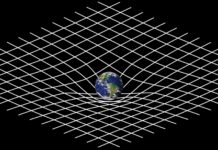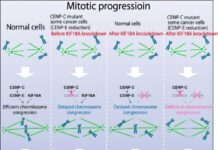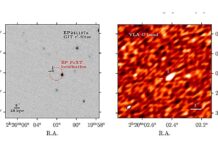Scientists at the Fritz Haber Institute have achieved a significant breakthrough in ultracold physics: trapping a stable molecule called aluminum monofluoride (AlF) using lasers operating in the deep ultraviolet range. This milestone, detailed in a paper accepted for publication in Physical Review Letters, paves the way for exciting advancements in precision spectroscopy and quantum simulation with molecules.
Ultracold Physics: A Window into Quantum Mechanics
Cooling matter to temperatures near absolute zero (0 K or -273.15°C) reveals the subtle dance of quantum mechanics that governs the behavior of particles at their most fundamental level. Think of it as zooming in on the universe’s tiniest building blocks, revealing hidden properties and interactions. This ultracold regime allows scientists to observe phenomena that are usually masked by thermal noise, providing invaluable insights into the workings of the quantum world.
Key examples include the discovery of superconductivity in mercury at extremely low temperatures and the perplexing behavior of molecular hydrogen with different “spin” states (ortho and para). These breakthroughs forced physicists to rethink their classical models of physics, pushing them towards the development of quantum mechanics.
Laser Cooling: A Revolution in Ultracold Physics
The invention of the laser revolutionized the field by providing a way to cool atoms and molecules using light. While individual photons carry minuscule amounts of energy, the cumulative effect of countless photons interacting with matter over time leads to significant cooling. Using carefully tuned lasers, scientists can achieve temperatures a thousandth or even a millionth of a degree above absolute zero – effectively entering the ultracold realm.
Magneto-Optical Trapping: A Powerful Tool for Ultracold Atoms
For nearly four decades, magneto-optical traps (MOTs) have been essential tools in ultracold physics. These traps combine laser beams with precisely calibrated magnetic fields to capture and cool neutral atoms to incredibly low temperatures, around one thousandth of a degree above absolute zero.
This technique has yielded groundbreaking results: it enables the creation of optical atomic clocks with unparalleled accuracy, drives the development of prototype atom-based quantum computers and simulators, and even reveals new phases of matter that defy classical expectations.
The Challenge of Ultracold Molecules: Beyond Atoms
While laser cooling and trapping individual atoms in MOTs is well established, bringing molecules into this ultracold realm presents a far greater challenge. Molecules possess more complex energy structures than single atoms, making them significantly harder to control and cool with lasers.
To date, only a handful of reactive molecules with unpaired electrons have been successfully trapped using MOTs. These molecules are inherently unstable and prone to chemical reactions, limiting their usefulness in precision measurements and quantum simulations.
AlF: A Triumphant Step Forward for Ultracold Molecules
The team at the Fritz Haber Institute has now overcome this hurdle by trapping aluminum monofluoride (AlF) — a chemically stable molecule — in a MOT. This achievement marks a pivotal moment, opening new doors for ultracold molecular physics.
Why is AlF so Special?
- Chemical Stability: Unlike other laser-cooled molecules, AlF boasts an exceptionally strong chemical bond and exhibits remarkable resistance to chemical reactions at ultracold temperatures. This stability makes it ideal for long-duration experiments without the risk of unwanted transformations.
- Deep UV Trapping: Cooling AlF demanded the development of lasers operating in the deep ultraviolet range (near 227.5 nm), pushing the boundaries of laser technology. This achievement not only demonstrates technical prowess but also sets a precedent for trapping other molecules requiring extreme wavelengths.
- Multi-Level Control: The researchers were able to trap AlF in different rotational quantum levels, a feat unmatched by previous experiments with laser-cooled molecules. This flexibility opens up avenues for exploring diverse molecular behaviors and manipulating them with greater precision.
This breakthrough comes after years of meticulous work: from studying AlF’s spectroscopic properties to developing deep-UV lasers and optimizing the trapping conditions. The success highlights the power of collaborative research and dedication within the Molecular Physics Department at the Fritz Haber Institute.
Looking ahead, laser-cooled AlF promises to revolutionize precision measurements of molecular properties, enable sophisticated quantum simulations with molecules, and even explore ultracold temperatures deeper than what’s achievable with current techniques by harnessing a metastable electronic state of AlF. This opens exciting new chapters in our understanding of the quantum world.



























